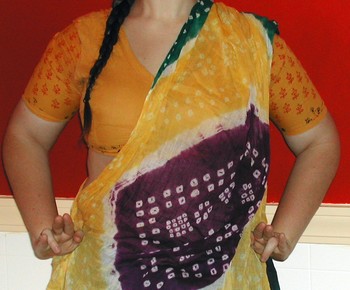Descriptions and Meanings
9:192
A Tripataka hand is placed on the waist and the other on the head. The sponsors of dance programmes know this as Pakṣavañcitaka.
9:188
Pakṣavañcitaka—one Tripatāka hand placed on the waist and another on the head.
26:84
When the fore-parts of the Tripatāka hands are placed on the top of the waist, the performer should know them as Pakṣavancita.
No verse annotation
Pakṣa-vañcita (bent wing): Tripataka hands are placed upon the hips. Patron deity Arjuna.
No verse annotation:
movement of the thighs, difference.

Tripatāka - No verse annotation

Tripatāka - No verse annotation
Mentioned by:
 Pakṣapradyota
Pakṣapradyota8:518
If two Tripataka hastas are placed - one on the waist and the other on the head - it becomes Pakṣavañcita (bent wing) hasta ; its patron deity is Arjuna.
8:518:
This hasta is used to denote the movement of thighs and in showing difference.
8:579-580
If two Ardhacandra hastas are placed on the waist, it is Pakṣavaṁcita hasta.
8:579-580:
This hasta denotes the wings of birds, rasana, and hip.
4:1257-1258
Pakṣavañcitaka: The hands which are in Tripatāka Hasta are placed on the upper part of the hips.
(no Tripataka in this text)
Not included elsewhere
7:91
Pakshavancita : Front parts of both hands with pataka hasta are kept in the front parts of waist, it is pakshavancita.
2:258
Kaṭakāmukha was suggested in place of tripataka. A few others said tripataka was originally called lalataka. One tripataka held at the waist and other at the head with the tips touching the body is pakṣavañcita.
:874
If one of the two Tripatakas is placed over the head and the other placed over the waist, it is Paksavancita hasta.
7:119
Placing tripatāka hastas in front of the waist and the head gives pakṣavañcita.
3:503
The fingertips of tripatāka hands are placed on top of the hips in pakṣavañcita.


 Pakṣapradyota
Pakṣapradyota

